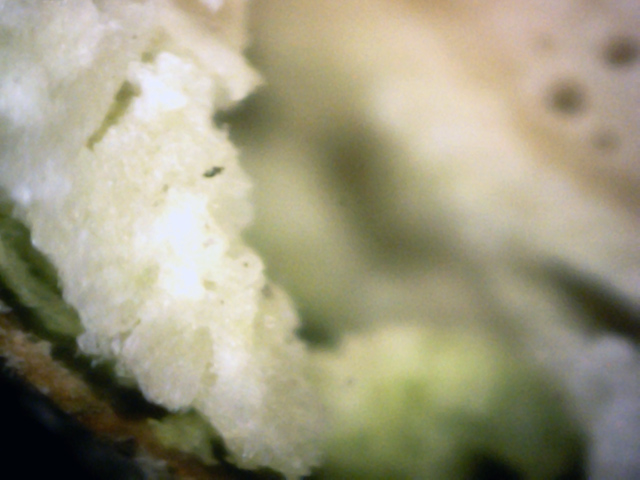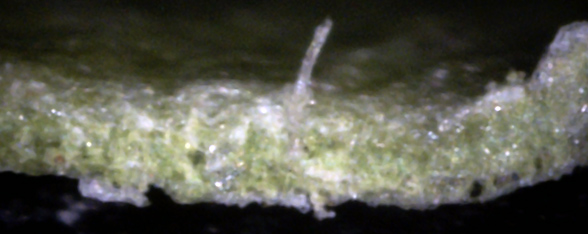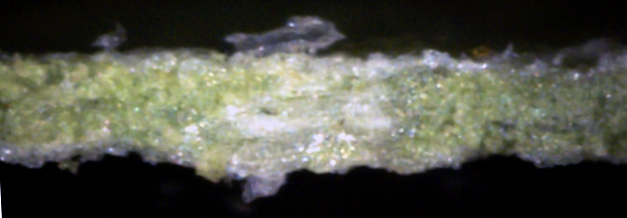My neighbor has a 25' tall ash tree.
Last year there were a few dead interior branches and the bark didn't look too good.
But the leaves weren't in bad shape.
This May the leaves look great, but there are significantly more dead branches, and the bark looks worse.
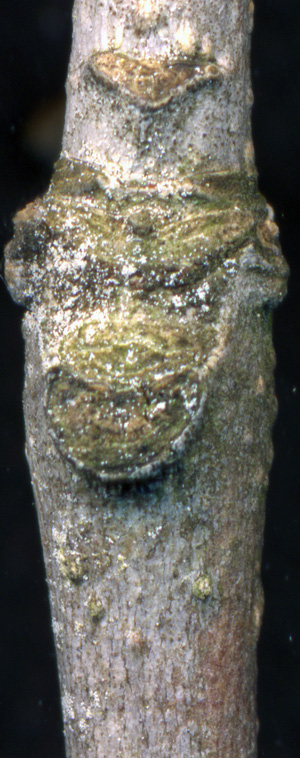
1
I snipped off one totally dead branch at the 6' level.
This dead quarter-inch branch was about 6' up.
This piece was about 1' from the branch tip.
Most of it was clean, but some areas, such as this leaf scar, had large spore counts.
The spores overwhelmingly cluster on parts of the branch having a large amount of scar tissue.
Typically, this is where one year's growth ends and another begins,
with very few spores on the bark in-between.
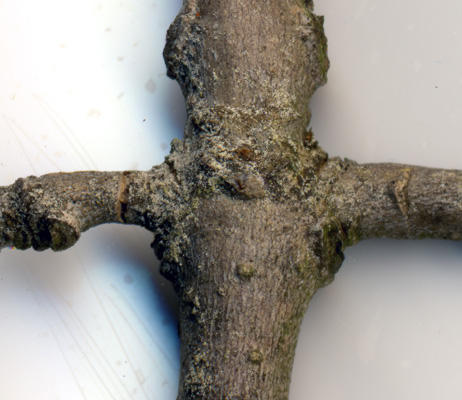
2
This is a picture of the same branch, except that it is 10"
from the branch tip. It shows a high spore density at the branch junctions.
Other parts of the branch had practically no spores.
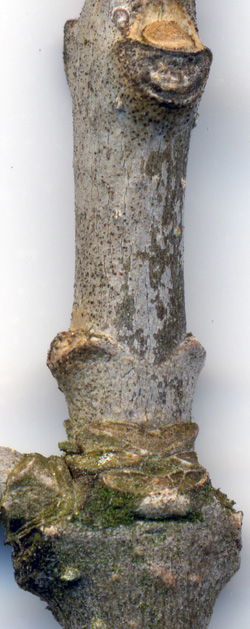
3
This branch is still alive and has healthy-looking leaves.
It was taken from the same area of the tree and is also about a quarter-inch thick.
Except for a very tiny patch of spores at the branch junction, no other spores are present on this branch.
However, note the leaf scar at the top of the picture.
Where we might expect to see spores, we instead see small brown dots of about the same size.
Could these be spore incubation sites?
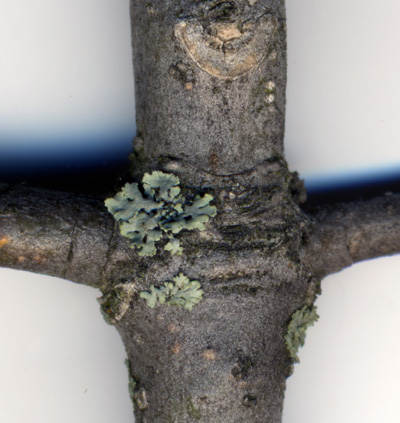
4
While there are no spores on this living branch yet, here we see another typical
branch junction characteristic - many have lichen growing where we would expect spores.
The lichen doesn't grow on any other parts of the branch.
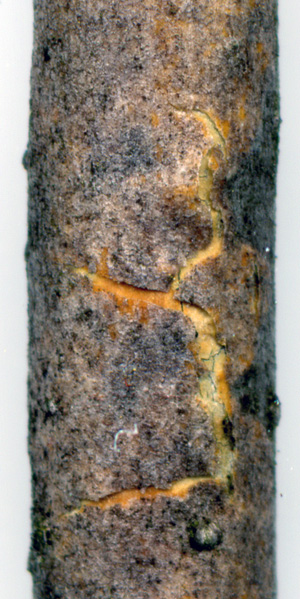
5
This area is a few more inches toward the tip of the branch.
The bark here is sickly yellow and split.
Even the inner bark is split (exposing the green cortex layer) and a black substance
is growing underneath the bark.
So this branch, while appearing healthy at first glance, is actually dying.
While the earlier pictures were taken in late May, the following set of pictures
were taken in late September.
At this time the white canker had already reproduced by shedding it's spores.
Hence, spores were hard to find.
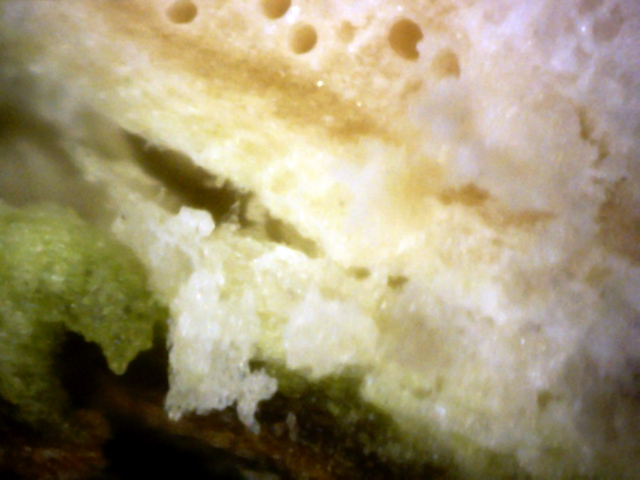
6
White canker is on the sapwood (white), blocking the vessels, and is also within
the inner bark, leaving a void. (400x)
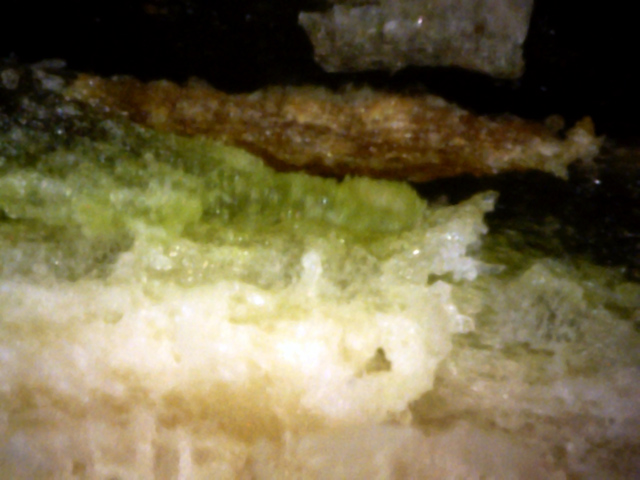
7
White canker growth has overrun the sapwood (plugging its vessels) and inner bark.
It has also destroyed part of the outer bark, leaving a void. (400x)
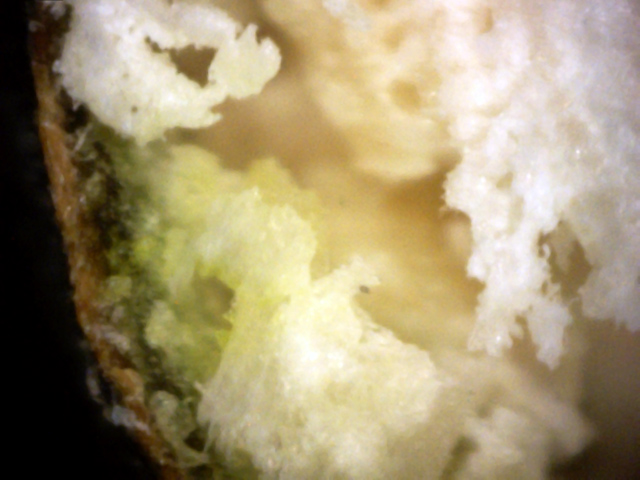
8
Here is a severe white canker infection - almost all the tissue under the
outer bark is white canker tissue.(400x)
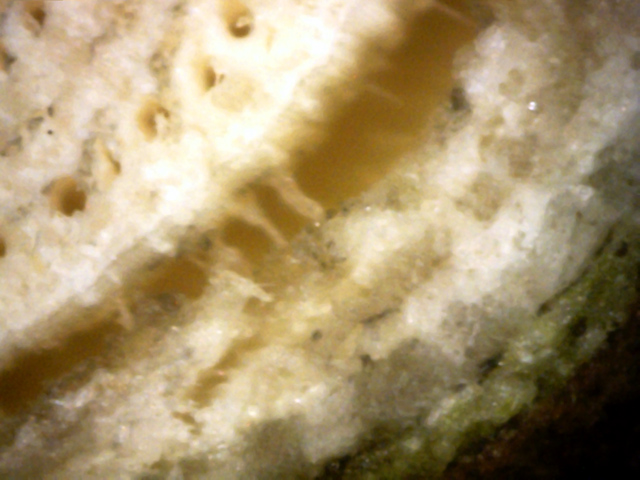
9
The bright area is white canker growth.
Notice that it is growing into the vessels and into the nearby void.
The void, in turn, was probably opened up by the growing of the canker in the outer bark. (400x)
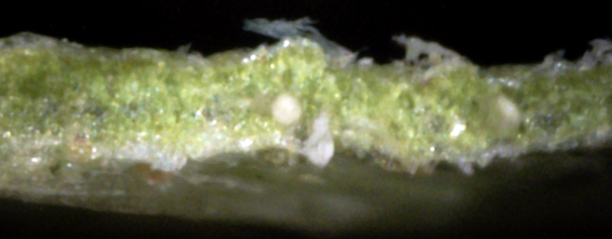
11
White canker spores appear within the leaf, and white canker material
appears to be growing out of the top of the leaf. (400x)
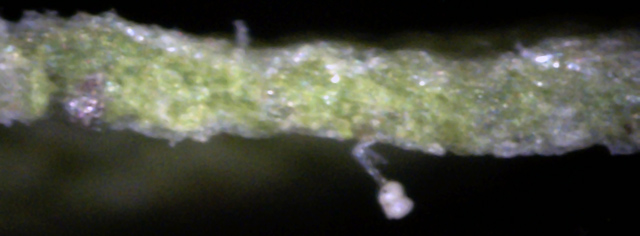
12
The hypha on the leaf bottom is attached to a white canker spore. Seeing these
spores is unusual this time of year. (400x)
